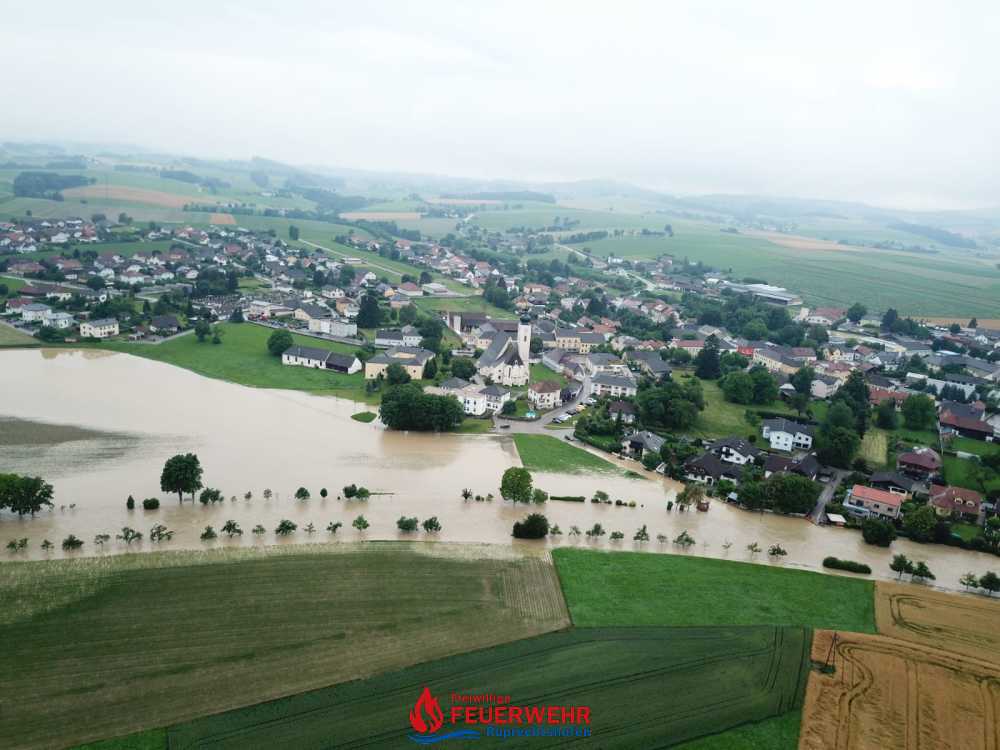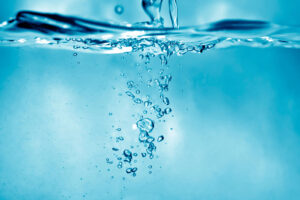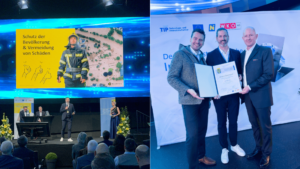The climate is changing and the frequency of heavy rainfall is increasing. Flooding, high water and mudslides must be expected. Heavy rainfall events pose a particular challenge for the sewerage system. Especially for combined sewers, where wastewater meets rainwater. The capacity of the sewerage system reaches its limits. This results in untreated combined sewage overflowing into nature and our rivers. A threat to the environment and our drinking water resources.
The challenges of heavy rainfall for sewers
Overloading of the wastewater system
Heavy rainfall events can overload the wastewater system. If the capacity of the system is exceeded, overflow events can occur, resulting in untreated wastewater being discharged directly into surface waters. This leads to environmental pollution and poses a serious risk to public health.
Risks for the infrastructure
The structural damage caused by heavy rainfall and overflow events is manifold. Erosion along sewers can lead to soil loss and damage to pipes, which in turn leads to flooding and increased maintenance costs. In addition, burst pipes and sewage infrastructure failures can cause significant economic damage.
Risk to public health
Overflow events in the wastewater system can affect the quality of drinking water and the environment. Untreated wastewater can contain pathogens, pollutants and other harmful substances that can jeopardise public health.
Flooding and damage to property
Heavy rain can lead to localised flooding, especially in areas with inadequate drainage or in low-lying areas. When sewers overflow, streets, basements and buildings can be flooded, causing significant damage to property and infrastructure.

Impact on the environment
Overflow events and the release of untreated wastewater can also have a negative impact on the environment. They can affect ecosystems in water bodies, reduce biodiversity and worsen water quality, which can have a long-term impact on the quality of life of plants, animals and humans.
Solutions for heavy rain monitoring and management
Use of data loggers in the sewer
Data loggers are used to monitor the effects of heavy rainfall on sewers. These enable the continuous monitoring of wastewater levels and the early detection of heavy rainfall events. By utilising real-time data, operators can react quickly to changes and take appropriate measures to prevent flooding.

Infrastructure measures to adapt to heavy rain
Various infrastructure measures are required to make sewers more resistant to heavy rainfall. These include the introduction of rainwater retention basins, the greening of roofs and roads and the modernisation of outdated sewer systems. These measures can increase the capacity of the wastewater system and minimise the impact of heavy rainfall events;
Reasons for using data loggers for heavy rain monitoring in the sewer
Monitoring the waste water level
Data loggers can be used to continuously monitor the water level in the sewer. During a heavy rainfall event, the level can rise sharply, which can indicate potential flooding. By recording these levels, operators can be warned in good time to take appropriate action to prevent flooding. Heavy rainfall events occur quickly and are often over quickly. This is why live data and measurement intervals of 10 seconds are relevant in order to recognise such events.

Evaluation of the wastewater volume
Heavy rainfall can lead to a sudden increase in the volume of wastewater entering the sewerage system. Data loggers can help to record and quantify these changes in the wastewater flow. This is important for assessing the capacity of the sewerage system and planning infrastructure measures to cope with heavy rainfall events.
Identification of overflow events
During heavy rainfall, the wastewater system can become overloaded and overflows can occur, releasing untreated wastewater into the environment. Data loggers can help identify such overflow events by detecting anomalies in the wastewater flow. This enables authorities to react quickly and minimise the impact on the environment;
In many countries, the recording of overflow events is already required by law. Data loggers can take on this task. The water levels are measured and recorded in automatic reports, so-called rain overflow logs, saved. Cameras regularly take fully automatic photos during an overflow event, which further expand the logging. After a heavy rainfall event, the combined water from the rainwater overflow basin is pumped back into the sewerage system in a controlled manner. The capacity of the sewer network and the sewage treatment plant is taken into account. The possibilities are unlimited. The examples mentioned are already a reality and not a distant dream of the future.

Mit dem Laden des Videos akzeptieren Sie die Datenschutzerklärung von YouTube.
Mehr erfahren
Long-term data analysis
By continuously recording wastewater levels and flows over a longer period of time, data loggers can help to identify long-term trends and patterns. This is important for assessing risks associated with heavy rainfall and developing preventative measures to minimise flooding and pollution. In addition, this data helps with the correct dimensioning of sewers.
Platforms that store the raw data are necessary to enable long-term data analysis. The measurement data must not be archived for detailed, manual or AI-supported data analyses. Only high data quality and long-term data storage enable meaningful analyses.
Conclusion
Heavy rainfall events represent an increasing challenge for the sewer. The effects can be minimised through the use of data loggers and infrastructure measures. This requires suitable data loggers, sensors and a platform. We will be happy to support you in selecting the right devices for your requirements. Arrange an appointment for a demo.
You might also be interested in:


